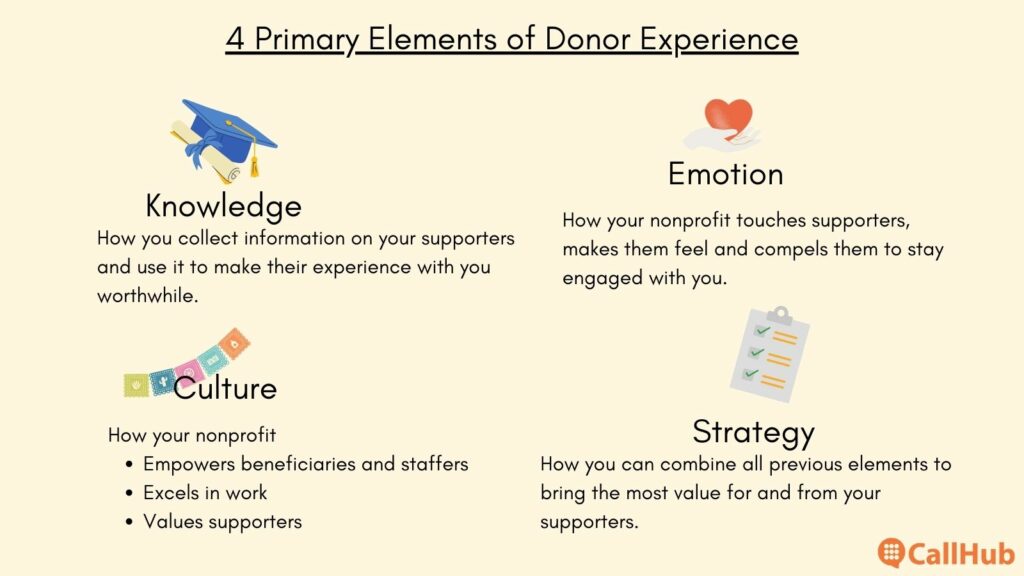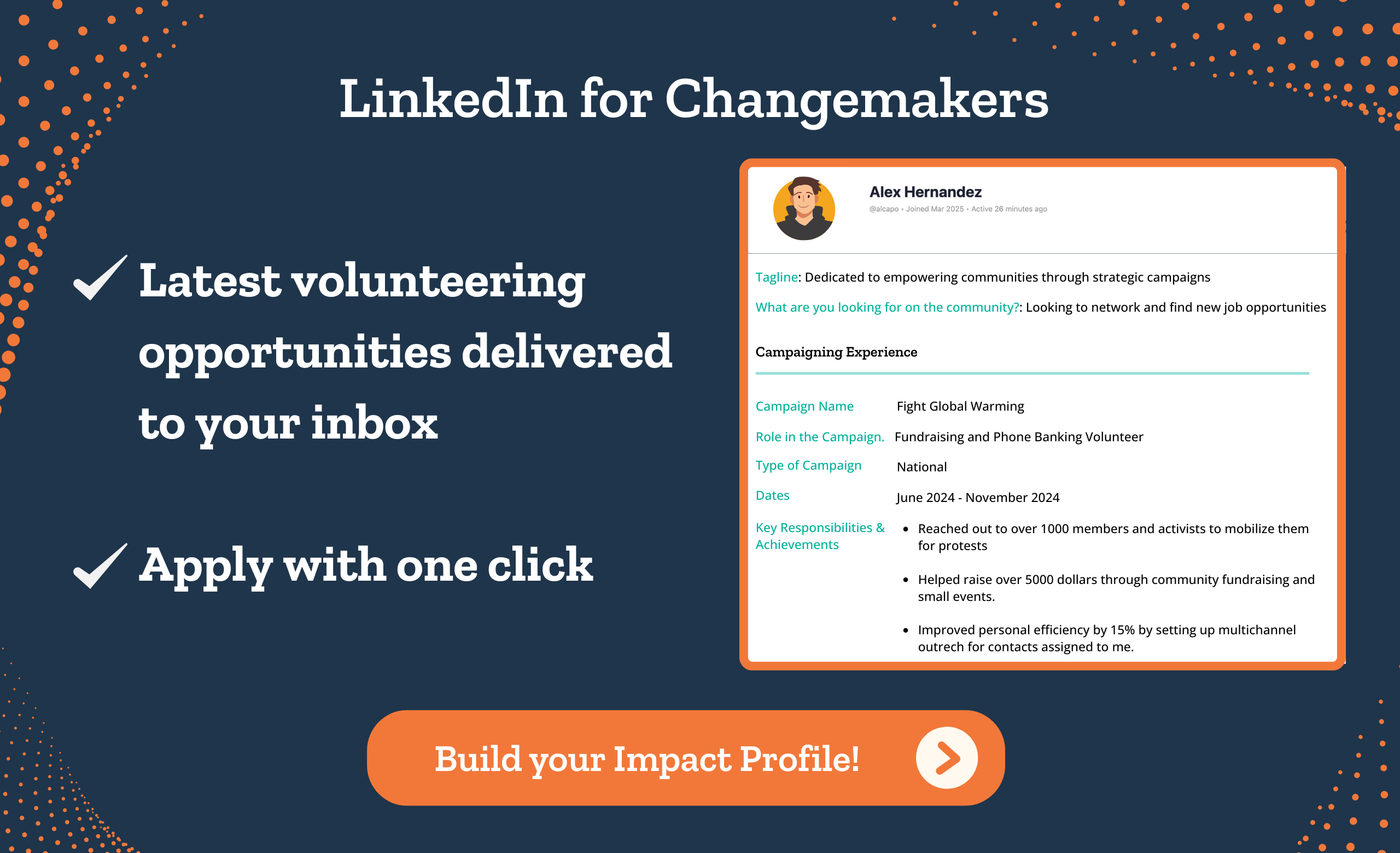Table of Contents
Donor acquisition can be up to five times as costly as retention. Even so, most organizations focus on acquiring new supporters rather than maintaining existing donor relations. Maintaining relations with supporters entails ensuring that the current ones are happy and engaged and continuing their support.
We acknowledge that one blog will not convince you to change your donor relations strategies. However, we can give you pointers on five formidable mistakes that sour your relationships with your donors and show you how to avoid those mistakes.
What are donor relations?

Donor relations are a nonprofit organization’s conscious and systematic effort to ensure that their paying supporters get the best experience with the organization. Maintaining donor relations can help you with larger contributions and lifetime value with the supporters.
This kind of donor management includes, but is not limited to:
- Communications with supporters.
- A smooth transaction process.
- Adequate and proportionate donor recognition strategies.
- Maintaining a vision or promise and following through with that.
You must keep a close watch on these four primary points while maintaining donor relations with the aim of retention.
Now, let’s look at the 5 big mistakes you must avoid.
Mistakes to avoid to maintain healthy donor relations
When you focus on retaining donors and acquiring new ones, you have already averted the first big mistake. The other mistakes include
- Communicating in an ad-hoc manner.
- Focusing on just one communication channel.
- Having donation channels with a tedious transaction process.
- Following one template to thank donors of all sizes and kinds.
- Not giving timing or adequate updates on a cause.
- Not have a donor prospect research strategy
Let’s look at each one of these in further detail.
Your communications strategy focuses on ad-hoc conversations
An essential part of donor relations is maintaining communications despite no ongoing campaign. These messages typically aim to keep donors engaged while collecting vital data about them- through surveys, contests, and organization updates.
How to rectify this mistake:
- Keep your messaging diverse: Instead of repeating messages about campaign announcements, beneficiary stories, or organization updates, mix them up! Your messages to supporters must combine long and short updates, one-way and two-way communications, and serious and fun conversations. This way, you can keep supporters curious about what you’re about to say.
- Maintain a healthy frequency of outbound messages: Messages from a nonprofit organization should not be so frequent that they bore supporters, nor should they have such a big gap that people forget about you. You should maintain a healthy frequency of messages. Usually, a monthly or weekly update is an excellent way to go. You’ve gone too far if you start sending more than 2 per week.
Avoiding the mistake of ad-hoc communications requires diligent planning. You must consider all campaigns planned in the next quarter or year, identify gaps between two campaigns, and map your communications calendar. This guide helps you build one: How to Effectively Plan a Nonprofit Communications Calendar (Template Included!).
You are focused on one communication channel only
People of different age groups, tech skills, education levels, and occupations will prefer different communication channels with you. Although channels that give you the highest returns are important, they shouldn’t be your sole method of communication.
Look at it from the donors’ perspective, and it becomes evident that these communications should be on a channel that they prefer and are comfortable with. Text messages, emails, and letters are some examples.
So, if your nonprofit focuses on one comfortable, affordable, or easy channel for you, you risk these messages being ignored.
Read Next: How to Ask for a Major Gift: 3 Fundraising Major Gift Ask Sample Scripts
How to rectify this donor relationships mistake:
- Diversify your channels: Invest in several channels that tick several boxes. No channel will cover all the advantages you’re looking for, but combining them can make communications for donor relations formidable. Some aspects to look out for include:
- Contacts’ preferences.
- Reachability.
- Personalization opportunities.
- Ability to add media.
- Segmentation possibilities.
- Value addition (to your nurturing journey).
- Minimum learning curve.
- Segment your supporters by their preferred channel: Once you’ve created a network of communication channels, segment your contact list by their preferred channel and send them messages only via that (or those) channel/s. You can achieve this by testing their responses to your messages on each channel or asking them how they would like to receive communications upfront.
Here’s a list of communication channels preferred for donor relations:
| Advantages | SMS | MMS | Phone calls | Letters | |
| Reachability | Yes | Yes | Medium | Yes | Medium |
| Personalization | Yes | Yes | Yes | Minimal | Yes |
| Media | No | Yes | Yes | No | No |
| Segmentation | Yes | Yes | Yes | Yes | Yes |
| Value addition | Possible | No | Possible | Yes | Yes |
| Learning curve | Short (for software) | Medium | Long (for software) | Long (for software) | Short |
You May Also Like: The Art Of Better Conversations: 10 Donor Communications Best Practices You Need To Follow
Giving channels with a long donation process hamper donor relations

Nonprofits see a 50-70% abandonment rate with online donation forms. This is especially true for a long, 2-page donation form.
Such drop-offs hamper donor relations even before they begin. Even if a person completes the long form for the first time, they are more likely to give you a second donation only if the process is substantially shorter.
You must design your donation forms to be short and invest in donation channels that allow donors to transfer funds quickly. This can signification improve donor relationships.
Here are some channels you can use:
- Text-to-give: Text-to-give is a channel through which an interested supporter texts a designated keyword to the nonprofit’s shortcode number (e.g., text EDUCATION to 30999). The organization would have set a fixed donation amount, and when a person texts the keyword, the amount gets added to their monthly phone bill.
- Text-to-donate: Donors send a designated keyword to the nonprofit’s shortcode or long code number. However, instead of a fixed amount being billed to their phone, an auto-response asks for more information (e.g., the amount to be donated) or sends a link to a donation form. This donation method is slightly longer than text-to-give but allows more freedom of choice in the donation amount.
- Venmo and other payment channels: Payment services like Venmo make transactions fast and secure. You could promote your ID or QR code on your home page or near the CTA buttons to encourage supporters to donate.
- Monthly giving: A monthly giving option perfectly harbors donor relations because it automates the giving process. While each donation may be small individually, a monthly commitment shows optimum donor engagement and reliable support. This helps significantly with donor retention and maintaining strong donor relationships.
- Donation pledges: 42% of people cited financial restrictions as a reason not to give. Instead of leaving them alone, you could nurture donor relations with such individuals by asking for donation pledges instead of giving them a gift immediately. Remember to maintain an updated donor database and take action based on their history.
Read our blog on using planned gifts programs for grassroots fundraising to understand how donation pledges can work in your favor.
One size (for gratitude) doesn’t fit all and hurts donor relationships
A 2021 study showed that targeted messaging after the donation could increase donation rates between 23.3% to 2.2%. However, the messaging and time of sending it depends on past giving behavior. First-time donors react differently than repeat donors to the messaging.
Similarly, to effectively retain donors, a donor recognition strategy as simple as a thank you note’s messaging, form, and size must be personalized to each person.
The biggest mistake in donor relations is having a one-size-fits-all gratitude process for donors. After all, donors want to feel good about giving to you, and the size of your gratitude note must reflect the size of their contribution.
How to rectify this donor relations mistake:
- Personalize each note/message/gift: In your notes, add small but identifiable details, such as the donor’s name, the kind of donation they made, and the cause they gave to in your gratitude message.
- Create a journey where significant donors don’t get the same gift/note again: Create an appreciation flow where a donor does not get a repeat gift or note. Of course, the standard acknowledgment message stays but creates a journey where their first donation gives them one return gift, and a repeat or more considerable donation gives them something more valuable.
- Standardize the donor recognition according to gift size/frequency: Standardize the donor appreciation format for one donation category towards one cause to ensure uniformity and ease of the process. For instance, everyone who gave $50-100 to cause XYZ gets a plush toy.
For more such ideas on donor recognition, read Donor Recognition Ideas: 10 Easy Ways To Thank Donors.
You are not providing timely reports and updates.
Donor relations will continue only if donors know how their support creates an impact. Therefore, it becomes paramount for nonprofits to ensure donors get timely reports, receipts, and updates to maintain engagement.
Failure to provide such reports can shake their confidence in you, which is dangerous, especially in the initial stages of donor nurturing.
How to rectify this mistake:
- Create an automated process for receipts: This ensures a fast (although bare minimum) acknowledgment of the donation. You can add other elements to the process by adding weekly or monthly updates to the donor.
- Create a nurturing flow with a personalized thank you note within 24 hours of the donation: After the first receipt, you must still give a personal thank you to major donors. Create a journey where each donor is categorized according to their contribution and into different communication channels, such as texts, emails, and phone calls. Ensure these notes go out within 24 hours of their donation.
- Add donors to a funnel connected with the beneficiary/group/cause they have contributed to. Depending on the cause, ensure they get a monthly, quarterly, or bi-annual report.
- Add these reports as a promise in your donor acquisition channels. This way, you set expectations for both parties.
- Send an annual report with updates on the cause they have contributed to and the related causes they might be interested in.
Read Next: 6 Easy Steps to Craft the Perfect Major Donor Cultivation Plan.
Not having a donor prospect research strategy
Donor prospect research should be part of your donor relations strategy. While it is important to maintain ties with existing donors, it is also important to learn about new donors.
A donor research gives you information such as:
- Giving capability
- Previous giving history.
- Education status
- Interests
- Demographic details
- Their involvement with your cause.
You can leverage this information to improve donor relations. When you know your donors’ interests, donor relationship management becomes easy. You can gift them according to their interests, use the data to plan donor events, and improve your messaging to align with your donors’ interests.
The way forward for donor relationships
One of the most personal ways of donor recognition is to write an appreciation letter. Whether a first-time donor or a repeat major donor, a letter will go a long way in maintaining relations. Of course, the letter’s contents will vary according to the target supporter. So, here is our guide to writing the perfect donor appreciation letter that will keep them engaged and satisfied with your organization: Donor Appreciation Letter: Everything You Need To Know To Craft The Perfect One.
Feature image source: Claudio Schwarz/Unsplash.

